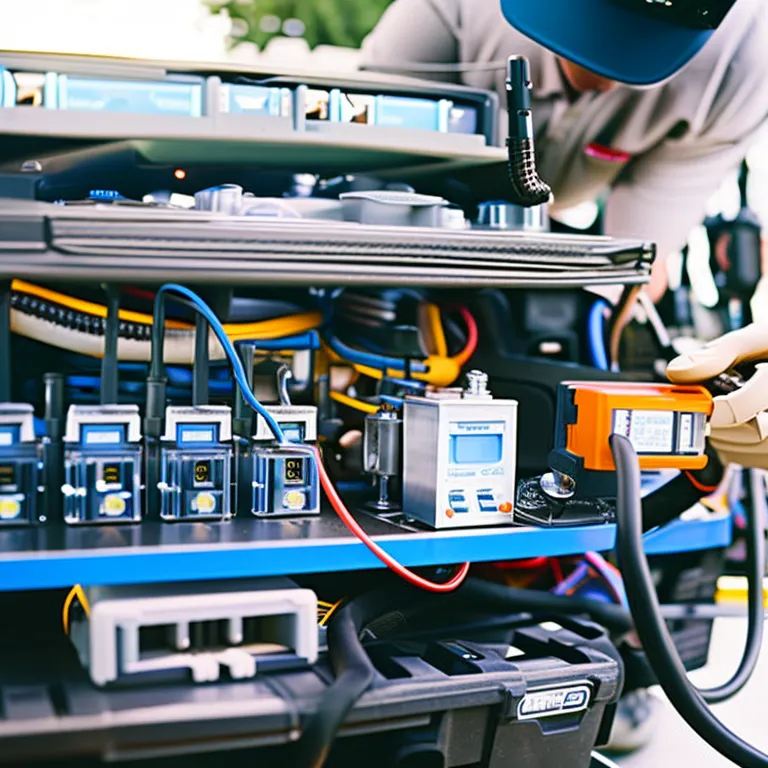Golf Cart Battery Maintenance: Deep Cycle Tips
Are you a proud owner of a golf cart? Do you want to ensure that your cart’s battery is always in top condition? Well, you’re in luck because we have some deep cycle tips for golf cart battery maintenance that will help you achieve just that.Golf carts are an essential mode of transportation for traversing the greens, and their batteries are what keep them running. As deep cycle batteries, they provide sustained electrical charge and power for an extended period.
By following our maintenance procedures, charging behaviors, and understanding the different types of batteries, you can ensure that your golf cart battery is always ready for a round of golf. So, let’s dive into the world of golf cart battery maintenance and make sure that your cart is always ready to hit the course.
Key Takeaways
– Deep cycle batteries are important for sustained electrical charge and power for golf carts.
– Proper maintenance is crucial for the longevity and performance of the battery.
– There are two types of deep cycle batteries: flooded deep-cell and sealed or maintenance-free.
– Using distilled water, proper charging behavior, and avoiding over-discharge are necessary for maintaining a healthy battery.
Types of Batteries
If you’re looking for a golf cart battery, you should know that there are two main types: flooded deep-cell batteries and sealed or maintenance-free batteries.
The flooded deep-cell batteries are the preferred type for golf carts because they allow for more hands-on maintenance procedures. This type of battery requires regular watering to run smoothly, but the process is relatively simple. Just fill the battery with distilled water whenever the water level drops below the plates, making sure not to overfill it. These batteries are also less expensive than the sealed or maintenance-free batteries.
On the other hand, sealed or maintenance-free batteries are more expensive and keep a vast majority of their water during operation. While they require less maintenance, the damage caused to the cell when overcharged or undercharged is higher. These batteries are a good option if you don’t want to spend a lot of time maintaining your battery, but they may not be the best choice for those who want to be able to take care of their battery themselves.
Ultimately, the type of battery you choose will depend on your personal preferences and needs.
Maintenance Procedures
To keep your power source running smoothly, make sure you’re following all of the recommended upkeep procedures, such as regular watering and equalization, to prevent damage and extend its lifespan. Deep cycle batteries require maintenance to function properly, and there are a few key steps you can take to ensure your golf cart battery is in top condition.
One of the most important maintenance procedures is regular watering for flooded deep-cell batteries. Keep an eye on the water levels and top off with distilled water as needed to prevent stratification and damage to the battery. Additionally, equalization should be done every few weeks to ensure that the battery’s cells are balanced and functioning properly. By following these simple tips, you can keep your golf cart battery running smoothly and reliably for years to come.
| Maintenance Procedures | Tips | Benefits |
|---|---|---|
| ————————– | ——————————– | ——————————————— |
| Regular Watering | Check water levels regularly | Prevent damage from stratification |
| Equalization | Do every few weeks | Ensure cells are balanced and functioning |
| Proper Charging Behaviors | Charge before below 45% | Prevent subtle damage over time |
| Use distilled water for filling | Prevent buildup of metallic ions | |
| Halt use when charge is low | Prevent damage to the battery’s lifespan |
Charging Behaviors
Make sure you always charge your power source before it drops below 45% to prevent subtle damage over time. Waiting too long to charge the battery can slowly and subtly damage it over a lengthy period.
It’s important to be aware of the charge level of your golf cart battery and take action before it’s too late.
When it comes to charging your golf cart battery, there are a few things you should keep in mind. Firstly, always use a charger that’s specifically designed for deep cycle batteries. Secondly, plug your charger into a grounded outlet that isn’t overloaded with other electronics. Lastly, make sure the charger isn’t left unattended for an extended period of time, as this can lead to overcharging and damage to your battery.
By following these simple tips, you can ensure that your golf cart battery stays in top condition and provides you with reliable power for years to come.
Frequently Asked Questions
What is the average lifespan of a golf cart battery and how can it be extended?
You can extend the average lifespan of a golf cart battery by taking proper care and maintenance. This includes regular watering and equalization, using distilled water, and charging before it drops below 45 percent. Pushing a dead cart is embarrassing, so take care of your battery!
Can I use regular tap water to fill my flooded deep-cell battery?
No, you should not use regular tap water to fill your flooded deep-cell battery. It can cause buildup of metallic ions and damage the battery. Always use distilled water for proper maintenance and longevity.
How can I tell if my battery is fully charged and ready to use?
Oh, it’s easy. Just look at the battery indicator and make sure it’s at 100%. Simple, right? Just like how you should always remember to charge it before it drops below 45%.
Can I use a car battery charger to charge my golf cart battery?
Yes, you can use a car battery charger to charge your golf cart battery, but it’s not recommended. Golf cart batteries are deep cycle and require a special charger designed for them to prevent damage.
Is it safe to store my golf cart battery indoors during the off-season?
Yes, it’s safe to store your golf cart battery indoors during the off-season. Make sure to fully charge the battery and disconnect it from the cart. Store it in a dry and cool place.



